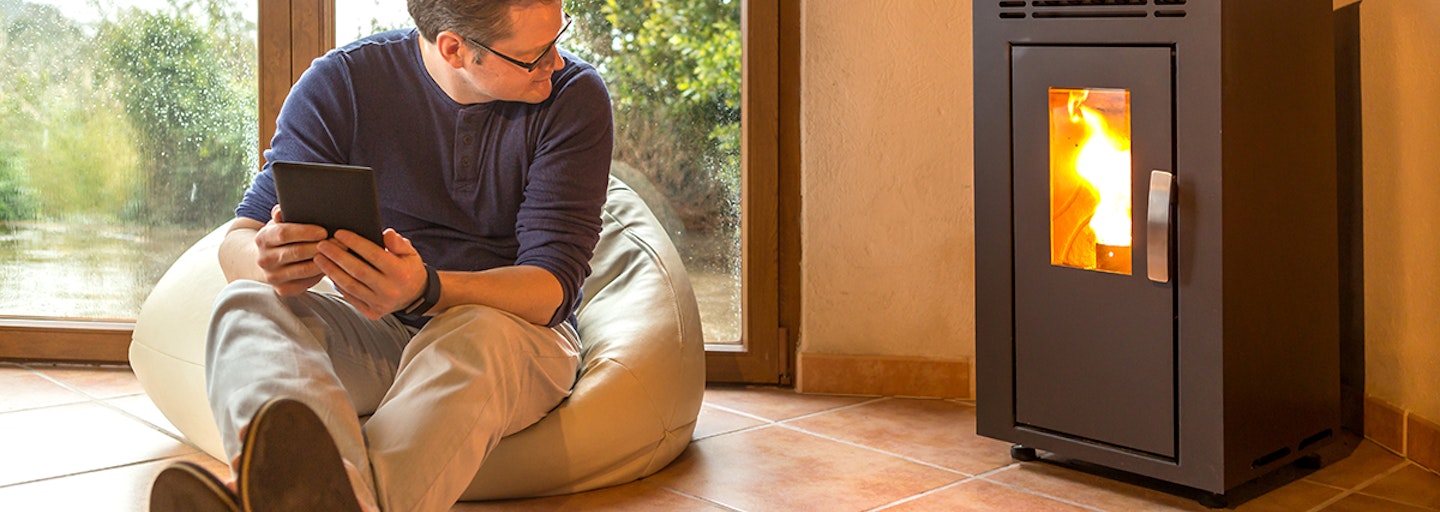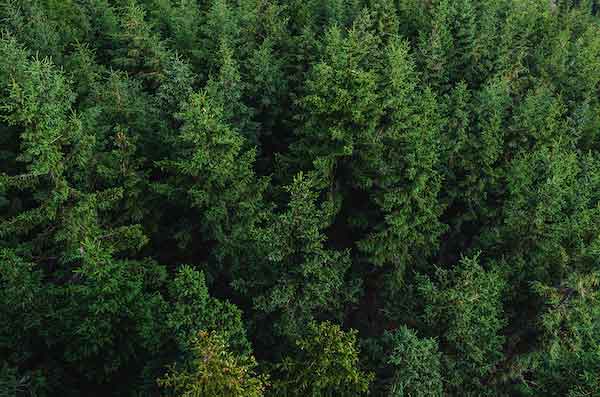What is a pellet fire? How they work and why you need one
Learn about pellet fires and the convincing reasons to consider investing in one for efficient, sustainable home heating.
What is a pellet fire?
A pellet fire, also known as a pellet stove or pellet heater, is a highly efficient, eco-friendly home heating device designed to provide warmth and comfort while minimizing environmental impact.
Pellet fires burn small, compressed pellets made from wood, to generate heat. The heavily compressed pellets have very little moisture and create a hotter flame than standard wood.
The key to their efficiency lies in the controlled combustion of these pellets, which not only produces sufficient warmth but also keeps harmful emissions to a minimum.
You can also install pellet boilers as a central home heating system.
How does a pellet fire work?
Firstly, pellets are loaded into the hopper, situated either at the top or bottom, depending on your stove type.
Next, a motor resembling a screw, known as the auger, transports the pellets to the combustion chamber's burn pot. The heat output is controlled by the auger's speed, determining the pellet delivery rate.
Inside the burn pot, a blower aids in mixing air with the pellets, creating combustion, which is the core of the burning process.
Lastly, the ash residue from the pellets, accumulates in the ash pot, requiring periodic cleaning.
How is pellet fuel made?
Azwood’s pellet fuel is made from Douglas fir pine and Pinus Radiata and is sourced from sustainably managed forests. After forest harvesting, we provide environmental clean-up services that remove wood fibre and bark residues that would otherwise be left on the forest floor. We also work closely with the construction industry and local sawmills to repurpose their wood waste to produce our range of sustainable products including pellet fuel.
There are no additives to our pellet fuel making them a chemical-free and environmentally friendly product to use.
How are wood pellets held together?
During the manufacturing process, wood goes through a pellet press at high pressure and heat, activating the wood's natural adhesive, lignin, that binds each pellet together.
The process of making pellet fuel
Sourcing wood residues
Drying
Pelletizing
Cooling
Screening
Quality control
Packaging and storage
Transportation to retail stores
The benefits of a pellet fire
Low emissions
Wood Pellets have been proven to provide the cleanest burn of any solid fuel and burn so efficiently that they're virtually smokeless meaning low emissions. Pellet fuel is also carbon neutral because when it burns, it releases the same amount of carbon dioxide (CO2) that the plants absorbed while growing to make the pellets.
Cost-Effective & Efficient
Pellet Fires can deliver you comfort and warmth at a lower cost than gas or electricity for the equivalent heat output. Wood pellets have a 5-8 % moisture content in comparison to 30-70% for firewood & woodchips. This means pellet fuel combustion is more efficient, getting the most out of your fuel.
Automation & easy to use
Most pellet fires are automated. The pellet fire will automatically start and feed the fire to your desired heat setting with the simple push of a button. Some models can also be thermostatically controlled or switched on or off using a timer or easily from your phone.
Convenient
Wood pellets can be purchased at your local reseller, take less space to store in your home and when you’re ready to use simply set the temperature & make sure the hopper has pellets in it. No more stocking, tending, blowing, or sweeping up the trail of wood you have left behind on the carpet.
Safe
No need to open the door while the fire is burning, as all the wood pellets are fed through the hopper at the back of the fire, so no danger of embers igniting on your carpet or you. There are multi-safety mechanisms within most pellet fires such as an auto cut-off to stop overheating and an auto stop if the fire runs out of pellets.
Consistent heat output
Pellet fires have a consistent heat output by continuously transferring pellets from the pellet hopper into the burn pot area. This automated process allows pellet stoves to maintain a stable and efficient heat level, providing reliable warmth while optimizing fuel consumption.
Things to consider with pellet fires
The initial set-up cost can be expensive. At the moment the cheapest pellet fires are around $4000 plus flue kits around $850. Installation and flashing is around $1200.
Plus you will need a building consent from the local council, these can range from $400 - $550 depending on the council.
Only pellets can be burned – so you can't take advantage of any free firewood. How long does a bag of pellet fuel last?
A small amount of electricity is required for them to work, so will not work during a power cut unless you have an alternative battery source. A 12-volt battery or a small generator is often used by our customers for backup and is easily obtained.
They are more complex than a wood burner, with electrical and electronic components that require regular maintenance. Tips for cleaning your pellet fire.
Older pellet fires can make a noise because they have fans and a hopper-feed motor, however, newer models are virtually silent.
What heating system is right for you?
While we are advocates for pellet fires, it's essential to recognize that individual circumstances vary, and this heating solution may not align with every home. To assess whether an alternative option suits your needs better, consider these questions.
Compare the top 5 home heating systems
Do you have access to free firewood?
Do you live in an area where there is natural piped gas?
Do you struggle with the manual labour of firewood?
Do you want one device for heating and cooling?
Are you trying to reduce your electricity bill?
Do you want the ambience of an open flame?


